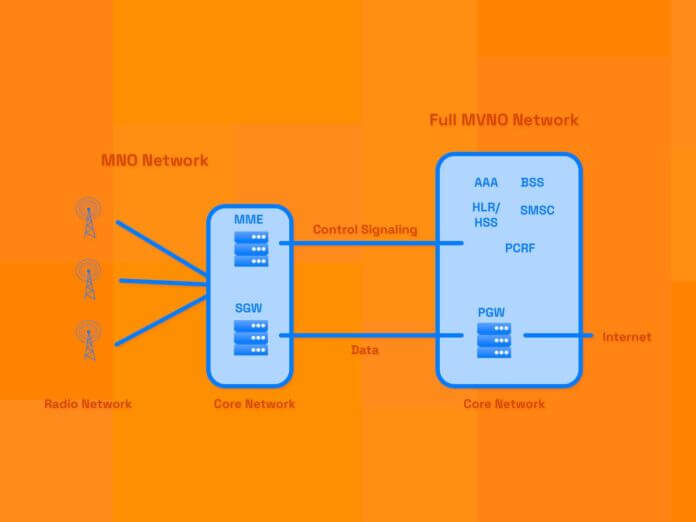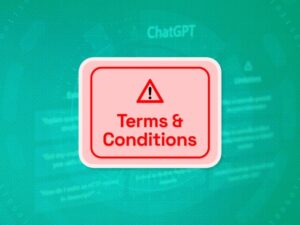
In contrast to radio access networks, elements of which can be seen, like cell towers, the core network usually remains the invisible part of cellular communication systems. However, it plays a key role in connectivity.
Apart from its main function – routing and transferring data traffic – the core network is responsible for the identification of a device and its location, its authentication, and authorization to use certain services, keeping track of service usage, and charging the client.
It is the core network that allows application policies like traffic limits, throttling, roaming restrictions, or services that only some of the devices can use.
But there is more to a core network than just carrying out all key functions, for a lot of critical connectivity features depend on its architecture, components, and network solutions being used.
It may be even more important for IoT deployments since oftentimes they have requirements that are different from regular mobile users, like device or use case-specific demands.
To a large extent, the provider’s ability to address these demands would be defined by the core network. While it is not necessary to own all network elements to provide connectivity services, the operators that have built their core networks have a major advantage.
Who Owns & Uses Core Networks
A cellular network operator, also known as a Mobile Network Operator (MNO), is a company that has built both a core network and a radio access network and uses them to provide connectivity to its clients.
Alongside Mobile Network Operators other providers use MNO networks to offer cellular connectivity services, called Mobile Virtual Network Operators (MVNO). Unlike MNOs, these providers usually focus on a certain segment of the market and provide a tailored connectivity offering, for example, for the automotive industry.
While virtual connectivity providers, as their name suggests, would typically use the infrastructure that is built by and belongs to other companies, the concept is more complex. There are several types of MVNOs, and they differ from one another by the share of infrastructure they own and, subsequently, the amount of services they can provide.
Some MVNOs choose a business model that doesn’t require owning any infrastructure, like Brand Resellers, and there are Light MVNOs that may own some of the core network elements, but they all are dependent on other operators’ core networks to a greater or a lesser extent.
It may be less demanding in terms of investments, but implies limited control both technically and business-wise, affecting their value proposition.
A Full MVNO is a provider that has a full-scale core network of its own and is only using other operators’ radio access networks to connect the devices to it. Building and maintaining a core network is not an easy task: it’s expensive, takes time, and requires a lot of expertise.
But in terms of the services, it gives full MVNOs flexibility in their connectivity offering and the ability to cater to the needs and specifics of certain use cases, which is essential for IoT deployments.
There are local and global full MVNOs, and the biggest difference between them is where their networks are located physically. A local MVNO has every network node in its home country.
A global MVNO doesn’t have a home country and would have all core network elements located in different places around the globe. It comes with a need to maintain equipment and troubleshoot in many far-away locations but also gives some advantages.
What Owning a Network Means
There are several nodes that providers need to own to have full control over the core network. First is the database of all subscribers, it’s called HLR in 3G, HSS in 4G, and UDM in 5G networks.
It contains information about users, what services they’re registered to get, what is their last known location, whether they are allowed to roam, and whether are there any other restrictions on different services they may use. Whenever a subscriber tries to access the network, a query is sent to this database to check whether he’s allowed to use a certain service.
The other element is the PGW the packet gateway in 4G or GGSN in 3G. Technically, it’s the router that the data traffic from subscribers is routed through to its destination.
Owning that part of the network ensures that the provider controls the flow of traffic, may impose different restrictions and policies, implement firewalls, and DPI solutions, or do traffic shaping, throttling, or changing the QoS level.
It is also important to control some aspects of access to the network by owning the Authentication, Authorization, and Accounting (AAA) module. Whenever a subscriber tries to access the network, he must be authenticated and authorized to use the services.
Some of the AAA functionality can be provided by a RADIUS server that can control access to the network by assigning IP addresses.
However, the range and the quality of connectivity services that a certain MVNO can provide are not only defined by what network elements it owns. The way the provider’s network is built and configured can play a critical role in IoT deployments.
Key features such as latency, robustness, scalability, and compliance with regulations depend on it.
Latency
The maximum acceptable latency may vary depending on the use case and the device type, but it’s important to understand that the actual level of latency would be defined by the core network architecture.
Whenever an IoT device sends data using a cellular connection, it goes through the mobile core network to its destination. If the device is roaming, the data it sends would need to travel to the connectivity provider’s data center before going to its receiving point.
In some cases, it can significantly increase latency, especially for global deployments, which makes the geographical architecture of a core network an important criterion.
That’s where a global MVNO has some advantages for roaming subscribers: by placing the PGWs in different countries around the world it is possible to ensure that the subscriber’s data is not routed to his home region but rather is handled by a gateway that is close to his actual location. The more PGWs an MVNO has around the world, the better service it can provide in terms of latency.
Reliability
Since the core network has a crucial role in routing traffic, it must be reliable and redundant. Core network operators implement certain architectures, components, and protocols to distribute traffic to ensure high availability and avoid failures.
However, the ability to deal with any type of issue and, more importantly, the speed of reaction would critically depend on whether the provider has immediate access to the network or needs to address a partner that operates it.
Having complete control over its core network allows a full MVNO to analyze its performance and make any necessary changes within the shortest possible time.
The number and the location of the PGWs that the provider owns directly affect latency, but they’re important for network robustness too. Technically, gateways can be set up in a redundant mode, and if connectivity to one of the PGWs fails, or the gateway is down completely, the traffic can be routed to a different PGW.
It might be slightly further away, which may increase latency a little but is still a better option than having a gateway down with a local provider that usually has only one or two PGWs handling all the traffic coming from outside of the country.
The HLR/HSS must be available 100 percent of the time and it’d be a catastrophe if it failed, so a provider would usually have it in a redundant setup, meaning that two nodes are copying each other, one in an active state, the other in standby mode, or both active but constantly syncing with each other.
There’s also geographical redundancy: if nodes are placed in two different locations the chance of them failing simultaneously due to a power cut, a natural disaster or any other reason is lower. However, the flip side of the coin is always cost, so there are not that many providers that make their network truly geo-redundant.
Scalability
With some IoT deployments, the core network must be ready for the exponential growth of traffic or geographical expansion. Scaling became much easier as networks evolved and split the hardware and software elements of the network.
All core network equipment is usually stored in data centers, and if in the past there were dedicated hardware units with certain software providing specific functionality, now data centers are mainly filled with standard servers with specific software running on them.
So almost any scaling process – no matter if it’s adding another gateway, expanding the capacity of the PGW, or increasing the size of the HLR – technically can be done immediately by renting an additional server in the same data center and installing the necessary software.
It is further simplified by another split, this time in the architecture between the equipment that handles the signaling part and the equipment dealing with data traffic. While in 2G and 3G networks, the same equipment handled both, now it’s easy to scale for example only Mobile Management Entity (MME), the main signaling node in 4G, or only gateways when you need to handle more traffic.
Architecture-wise, full MVNOs typically have a distributed core network that connects IoT devices to a range of connectivity entities that are linked to central connectivity nodes like switches and hubs. It allows for quick expansion by adding more layers of devices over the existing layers, ensuring scalability for any IoT deployment.
Compliance
Most countries have already enacted legislation on data localization and data sovereignty, which may prohibit the data generated and gathered inside the country from leaving its borders.
It can be a serious challenge for global IoT deployments because to comply with local regulations some elements of a core network should be available in every country the devices are deployed to. That would require either reaching an agreement with another operator that owns local infrastructure or adding necessary elements to the connectivity providers’ core network, which is only possible if it’s a full MVNO.
In heavily regulated countries like Turkey, an MVNO might also have additional integrations with local authorized entities to provide seamless connectivity. And here, too, the more gateways a provider has around the world, the easier it is to comply with the regulatory requirements.
Offering Customization
From a business perspective, having a core network allows full MVNOs to be independent of infrastructure owners, become more flexible in their offerings, and tailor them to every customer instead of using the one-size-fits-all approach. That may be especially valuable for IoT clients with their industry or device-dependent use cases.
While only big enterprises may require specific infrastructure solutions, theoretically a full MVNO could easily implement a PGW in the client’s local hub. However, typically what IoT clients need is more related to services, not to the network infrastructure.
So, since clients usually ask for an IP address range or a VPN setup, the customization capabilities would come down to whether an MVNO can provide a certain service or not. A global MVNO is more likely to have flexibility and provide any kind of tailored offer than some other operators.
Along with minimal latency and full compliance with regulatory requirements, a global full MVNO has a lot of other advantages: better coverage, centralized management capabilities, and visibility to data usage and network events.
Besides, with the IoT device lifecycle being up to 15 years and both technology and regulation landscapes being subject to change, it is important to ensure deployments are future-proof, and who owns the core network is key.
All in all, even if the scale and configuration of a certain IoT deployment do not require geographically specific architecture, there are many good reasons why a connectivity provider that owns a redundant core network spread all over the world is a better option.
- SEO Powered Content & PR Distribution. Get Amplified Today.
- PlatoData.Network Vertical Generative Ai. Empower Yourself. Access Here.
- PlatoAiStream. Web3 Intelligence. Knowledge Amplified. Access Here.
- PlatoESG. Carbon, CleanTech, Energy, Environment, Solar, Waste Management. Access Here.
- PlatoHealth. Biotech and Clinical Trials Intelligence. Access Here.
- Source: https://www.iotforall.com/how-a-core-network-defines-your-iot-connectivity-providers-capabilities
- :has
- :is
- :not
- :where
- $UP
- 1
- 100
- 15 years
- 15%
- 5G
- 5G networks
- a
- AAA
- ability
- About
- acceptable
- access
- Accounting
- active
- actual
- adding
- Additional
- address
- addresses
- ADvantage
- advantages
- affect
- affecting
- Agreement
- All
- allowed
- allows
- almost
- already
- also
- always
- amount
- an
- analyze
- and
- Another
- any
- Application
- approach
- architecture
- ARE
- around
- AS
- ask
- aspects
- authenticated
- Authentication
- authorization
- authorized
- automotive
- automotive industry
- availability
- available
- avoid
- away
- BE
- became
- because
- become
- before
- being
- belongs
- Better
- between
- Big
- Biggest
- borders
- both
- brand
- Building
- built
- business
- business model
- but
- by
- called
- CAN
- capabilities
- Capacity
- carrying
- case
- cases
- cater
- cell
- cellular
- Center
- Centers
- central
- centralized
- certain
- challenge
- Chance
- change
- Changes
- changing
- charging
- check
- Choose
- client
- clients
- Close
- Coin
- come
- comes
- coming
- Communication
- communication systems
- Companies
- company
- complete
- completely
- compliance
- comply
- components
- concept
- Configuration
- configured
- Connect
- connection
- Connectivity
- connects
- constantly
- contains
- contrast
- control
- controls
- copying
- Core
- Cost
- could
- countries
- country
- coverage
- critical
- crucial
- customer
- customization
- Cut
- data
- Data Center
- data centers
- Database
- deal
- dealing
- dedicated
- defined
- Defines
- demanding
- demands
- dependent
- Depending
- deployed
- deployment
- deployments
- destination
- device
- Devices
- differ
- difference
- different
- directly
- disaster
- distribute
- distributed
- do
- Doesn’t
- done
- down
- due
- each
- easier
- easily
- easy
- either
- element
- elements
- ensure
- ensures
- ensuring
- enterprises
- entities
- entity
- equipment
- especially
- essential
- Ether (ETH)
- Even
- events
- Every
- evolved
- example
- existing
- expanding
- expansion
- expensive
- expertise
- exponential
- Exponential Growth
- extent
- Failed
- failing
- fails
- Features
- filled
- firewalls
- First
- Flexibility
- flexible
- Flip
- flow
- Focus
- For
- from
- full
- full-scale
- function
- functionality
- functions
- further
- Gartner
- gateway
- gathered
- generated
- geographical
- geographically
- get
- gives
- Global
- globe
- Goes
- going
- good
- greater
- Growth
- handle
- Handles
- Handling
- Hardware
- Have
- having
- he
- heavily
- here
- High
- his
- Home
- How
- However
- HTTPS
- Hub
- Hubs
- Identification
- if
- immediate
- immediately
- implement
- important
- impose
- in
- Increase
- increasing
- independent
- industry
- information
- Infrastructure
- inside
- installing
- instead
- integrations
- Investments
- iot
- IoT Device
- iot devices
- IP
- IP Address
- IP addresses
- issue
- IT
- ITS
- jpg
- just
- keeping
- Key
- Kind
- known
- large
- Last
- Latency
- layers
- leaving
- Legislation
- less
- lesser
- Level
- lifecycle
- light
- like
- likely
- Limited
- limits
- linked
- little
- local
- Localization
- located
- location
- locations
- Lot
- lower
- Main
- mainly
- maintain
- maintaining
- major
- make
- MAKES
- management
- many
- Market
- Matter
- max-width
- maximum
- May..
- meaning
- might
- minimal
- Mobile
- Mode
- model
- module
- more
- much
- must
- name
- Natural
- necessary
- Need
- needs
- network
- network equipment
- networks
- no
- node
- nodes
- now
- number
- of
- offer
- offering
- Offerings
- oftentimes
- on
- ONE
- only
- operates
- operator
- operators
- Option
- or
- Other
- out
- outside
- over
- own
- owners
- owns
- part
- partner
- past
- percent
- performance
- perspective
- Physically
- placed
- Places
- placing
- plato
- Plato Data Intelligence
- PlatoData
- Play
- plays
- Point
- policies
- possible
- power
- process
- prohibit
- proposition
- protocols
- provide
- provided
- provider
- providers
- providing
- quality
- Quick
- Radio
- range
- rather
- reaching
- reaction
- ready
- reason
- reasons
- receiving
- region
- registered
- regular
- regulated
- Regulation
- regulations
- regulatory
- related
- reliable
- remains
- require
- Requirements
- requires
- responsible
- restrictions
- robustness
- Role
- router
- routing
- running
- same
- Scalability
- Scale
- scaling
- seamless
- seen
- segment
- sends
- sent
- serious
- server
- service
- Services
- set
- setup
- several
- shaping
- Share
- should
- side
- significantly
- simplified
- simultaneously
- since
- Size
- So
- Software
- Solutions
- some
- sovereignty
- specific
- specifics
- speed
- split
- spread
- standard
- State
- Still
- stored
- subject
- subscriber
- subscribers
- Subsequently
- such
- Suggests
- Systems
- tailored
- takes
- Task
- technically
- Technology
- terms
- than
- that
- The
- the world
- their
- Them
- There.
- These
- they
- this
- Through
- time
- to
- too
- track
- traffic
- Transferring
- travel
- truly
- Turkey
- two
- type
- types
- typically
- understand
- units
- unlike
- Usage
- use
- use case
- used
- users
- uses
- using
- usually
- Valuable
- value
- value proposition
- Virtual
- visibility
- VPN
- Way..
- were
- What
- What is
- when
- whenever
- whether
- which
- while
- WHO
- why
- with
- within
- world
- would
- years
- you
- Your
- zephyrnet











